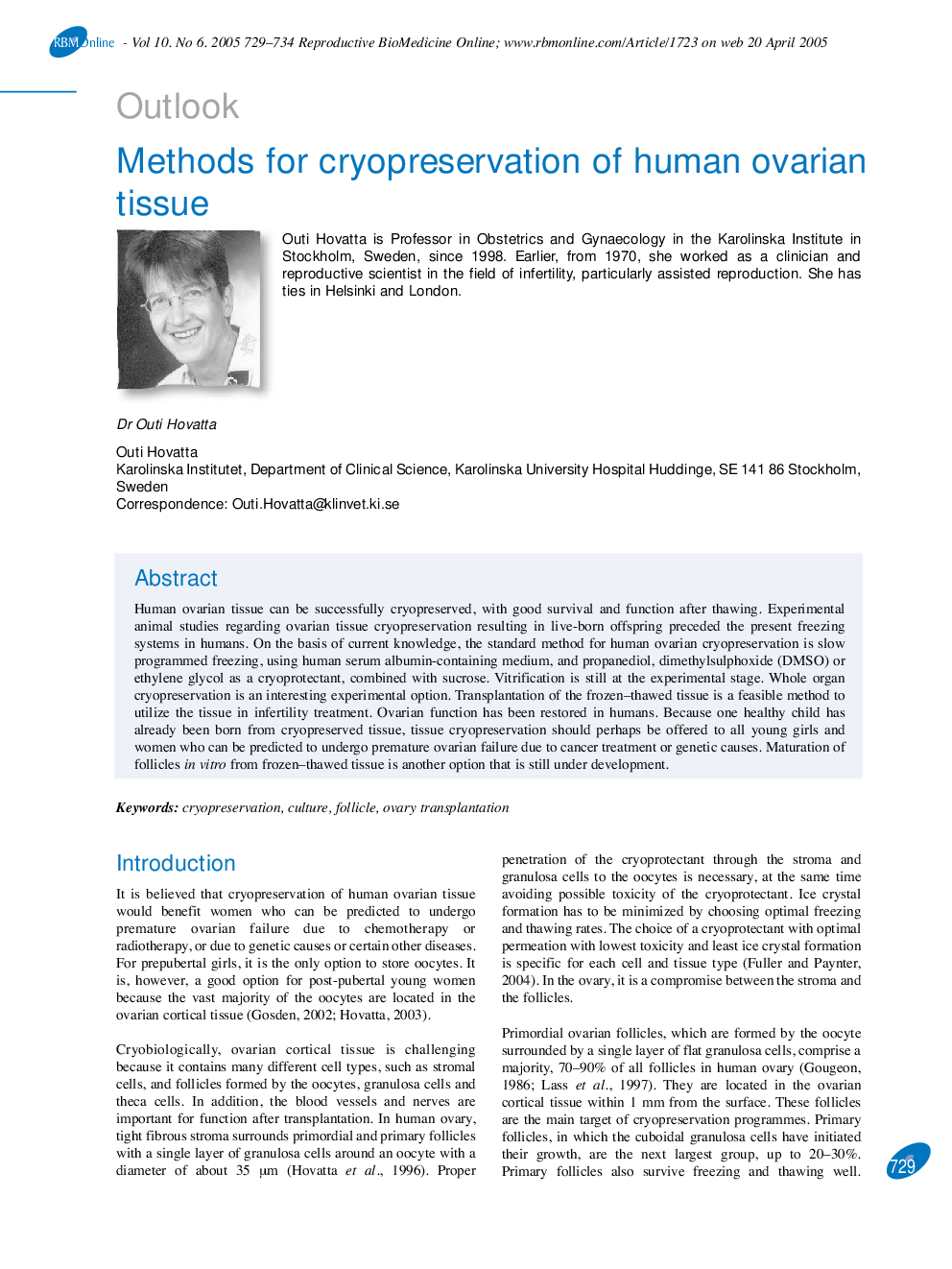| Article ID | Journal | Published Year | Pages | File Type |
|---|---|---|---|---|
| 9334851 | Reproductive BioMedicine Online | 2005 | 6 Pages |
Abstract
Human ovarian tissue can be successfully cryopreserved, with good survival and function after thawing. Experimental animal studies regarding ovarian tissue cryopreservation resulting in live-born offspring preceded the present freezing systems in humans. On the basis of current knowledge, the standard method for human ovarian cryopreservation is slow programmed freezing, using human serum albumin-containing medium, and propanediol, dimethylsulphoxide (DMSO) or ethylene glycol as a cryoprotectant, combined with sucrose. Vitrification is still at the experimental stage. Whole organ cryopreservation is an interesting experimental option. Transplantation of the frozen-thawed tissue is a feasible method to utilize the tissue in infertility treatment. Ovarian function has been restored in humans. Because one healthy child has already been born from cryopreserved tissue, tissue cryopreservation should perhaps be offered to all young girls and women who can be predicted to undergo premature ovarian failure due to cancer treatment or genetic causes. Maturation of follicles in vitro from frozen-thawed tissue is another option that is still under development.
Related Topics
Health Sciences
Medicine and Dentistry
Obstetrics, Gynecology and Women's Health
Authors
Outi Hovatta,
